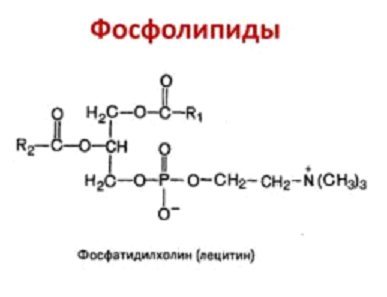Today, almost half of humanity is prone to developing kidney stones. They enter the bladder through the ureter. Until the first attacks of renal colic, a person may not be aware of their existence. There are urate, oxalate and phosphate formations. The cause of urolithiasis lies in a violation of the acid-base balance.
The most dangerous are phosphate stones with a smooth surface, which tend to increase in size.
The calcium salts included in their composition allow diagnostics using x-rays. The largest of them are called coral stones and are the main reason for kidney removal surgery. It is important to detect phosphate kidney stones at the beginning of their formation, when crushing techniques can be used.
According to doctors, these stones are infectious formations, since their occurrence may be associated with infection. Most often, these formations are associated with intestinal infections and poor hygiene.
The peculiarity of such formations is their ease of dissolution, so it is possible to carry out drug treatment by correcting the acidity of urine.
Reasons for education
- Violation of water-salt balance with low fluid intake.
- Urinary tract infection.
- Phosphaturia is the rapid transformation of phosphates into crystals.
- Slow urine formation with high salt concentrations;
- deficiency of vitamins D and A;
- Love of chocolate, tea and coffee, as these habits cause an increase in calcium levels in the blood;
- physical inactivity;
- increased calcium content in urine due to poor diet;
- endocrine diseases;
- genetic predisposition;
- kidney dysfunction.
Goals of diet therapy for phosphaturia:
- decreased urine pH (increased urine acidity)
- normalization of phosphorus and calcium metabolism
- decreased production of hydrochloric acid in the stomach
- decreased excitability of the nervous system.
The first necessary condition is an increase in the amount of fluid. Especially before bedtime, since urine is most concentrated at night.
The fluid is increased by pure water or mineral water, which increases the acidity of urine (for example, Truskavetskaya, Dolomitnaya, Narzan, Arzni, Sairme, Darasun, Dzau-saur). You can add drinks that acidify urine (cranberry juice, lingonberry juice, apple and grape juice from sour varieties), but in small quantities, otherwise calcium excretion will increase.
The amount of liquid should be about 2-3 liters per day. But not less than 30 ml per 1 kg of weight for body weight above 80 kg. You should also not drink a lot of liquid for a long time, since with increased urination, the pH of urine shifts to the alkaline side.
To increase the acidity of urine, it is necessary that the amount of “acidic” foods prevail over “alkaline” ones.
“Alkaline” products include : milk, cottage cheese, watermelons, apples, onions, unpolished rice, butter, pears, peaches, apricots, cabbage.
The basis of nutrition is “sour” foods, they help increase the acidity of urine: meat, cereals, peanuts, tomatoes, raisins, hard cheese, spinach, lettuce, carrots, lemons, oranges, cucumbers. It is recommended to consume 1-2 eggs daily, which also helps to increase the acidity of urine. Recommended dishes include pumpkin, sour apples, and lingonberries.
Products with a high phosphorus content are limited: legumes, corn, fish, dairy products, dried fruits, garlic, beef liver.
Considering the fact that dysfunction of the nervous system is considered as one of the possible causes of phosphorus metabolism disorders and the development of phosphaturia, therefore, in the complex therapeutic nutrition of this disease, we reduce the amount of products that stimulate the nervous system: coffee, green tea, hot peppers, chocolate, cocoa.
One of the reasons for the increased production of hydrochloric acid may be excessive parasympathetic activity as part of autonomic dysfunction of the nervous system, and this in turn leads to a deficiency of acid valencies and, possibly, alkalinization of urine, as well as increased absorption of calcium in the intestine and increased excretion by the kidneys. In this regard, we reduce the consumption of foods that stimulate the secretion of hydrochloric acid: hot spices, broths, coffee, alcoholic drinks, sweets, baked goods, carbonated drinks (kvass and others).
We limit the amount of salt, since its excess helps remove calcium and increase phosphorus levels.
Add herbal teas from the leaves of lingonberry, bearberry, centaury, horsetail, burdock root, tricolor violet, madder dandelion, lovage, and knotweed - they stimulate the excretion of phosphates.
With such a restrictive diet, the body will not be fully provided with calcium and vitamin C, so it is advisable to periodically (several times a week) add dairy products and fruits in moderate quantities. For the same purpose, you can take multivitamin complexes, but without vitamin D.
Symptoms of the disease
The difficulty of diagnosis lies in the absence of symptoms at the initial stage. The presence of phosphate formations in the body is indicated by active pyelonephritis and standard symptoms:
- aching constant pain in the lower back;
- sudden pain radiating to the abdomen, pelvis and lower back indicate renal colic, which may be caused by phosphate stones;
- with large formations, the temperature may rise and the normal process of urination may be disrupted (itching, burning, frequent urge);
- Stones may be passed out in the urine.
To make an accurate diagnosis, additional research is required:
- urine analysis for the presence of salts, alkali and inflammation;
- X-ray;
- blood test (general);
- kidney tests to determine kidney failure.
Tactics
Restricting dietary phosphate is a bad strategy. High levels of phosphates are associated not so much with dietary habits as with metabolic disorders.
Acidification of urine is a bad tactic. Precipitation of phosphates occurs against the background of an alkaline urine environment, but in some cases the alkaline environment of urine is combined with metabolic acidosis (blood acidosis). And in such situations, on the contrary, you need to drink alkalizing drinks.
A good tactic is to follow general recommendations for urolithiasis: sufficient amount of water, limiting table salt and animal protein, active consumption of foods rich in potassium and citrate.
Treatment of the disease
The goal of therapy is to dissolve the stones. The problem is solved by a set of measures.
- In the presence of infectious diseases, antibacterial, antimicrobial and anti-inflammatory treatment is carried out - antibacterial and sulfonamide agents are prescribed.
- It is possible to take herbal remedies and medications to dissolve the formations. IMPORTANT! Before use, be sure to consult with a specialist who will conduct the necessary examinations to determine the type, size and location of the stones. Those fees that will be useful for phosphate stones can be harmful for other types of stones and vice versa. Don't self-medicate!
- For pain, antispasmodics are prescribed.
- Treatment includes a special set of exercises and diet.
If all doctors' recommendations are followed, kidney stones are quickly removed without pain. If the dissolution process is delayed, lithotripsy is used - a shock wave method. If the kidneys are in advanced condition, the patient is recommended to remove the formations surgically.
Information for specialists
Excess phosphates in daily urine require a detailed examination to exclude the oncological nature of this symptom. After excluding cancer pathology, selection of an individual diet is required under the control of a daily urine test. For example, the same potassium eliminates the lack of protective citrate, but increases the pH level. Citrate is an inhibitor of stone formation, while the alkaline environment of urine, on the contrary, accelerates the precipitation of phosphorus salts. It is difficult to predict which effect will predominate in any given patient, so a 24-hour urine sample is required. In general, the metaphylaxis of phosphate stones is similar to the metaphylaxis of oxalate stones: limiting table salt and animal protein, sufficient fluids and thiazide diuretics if necessary.
Diet
If you have phosphate stones in the kidneys, you need to follow a diet to stop their growth and reduce their size. Foods that provide an alkaline reaction are excluded from the diet:
- dairy dishes;
- eggs and sour cream;
- mushrooms;
- spices, spices and herbs;
- smoked products and canned food.
To oxidize urine, it is useful to include in the menu:
- fish and meat;
- peas;
- flour products other than baked goods;
- Brussels sprouts;
- porridge.
Find out more at a consultation with specialists from the Central Clinical Hospital of the Russian Academy of Sciences in Moscow. Make an appointment by calling the numbers listed on the website.
The mechanism of appearance of phosphates in urine
Salts are formed as a result of an imbalance in the acid-base balance. During metabolism, phosphorus is converted into an acid, which subsequently combines with various elements to form phosphate salts. Typically, such formations are gradually eliminated through the kidneys and do not cause harm to the body.
With some diets and diseases, the acidity of urine changes. Under alkaline conditions, increased formation of amorphous phosphates and tripelphosphates is observed. The kidneys cannot cope with the load - they do not have time to remove all the salts, which is why they accumulate and form calculi (stones).
Phosphate salts, being in excess, interfere with the absorption of a large number of useful substances in the body, including calcium, which inevitably leads to hypocalcemia.
Diagnostic methods
To determine the degree of deposition of phosphoric acid salts, the patient's daily urine collection is examined for the presence of phosphorus. At the same time, carrying out this type of diagnosis allows for a real assessment of the activity of the urinary organs. For the best reliability of laboratory analysis, you should adhere to certain conditions for preparing for the study, which are that 1 - 2 days before the examination you should avoid:
- intense physical activity;
- consumption of alcoholic beverages, tobacco products;
- eating spicy, pickled, salty foods.
Prevention of phosphaturia
Prevention is of great importance in maintaining health. To prevent phosphaturia, you must follow a number of rules:
- Limit the consumption of preservatives, spicy, salty and smoked foods.
- Drink at least two liters of fluid per day.
- To live an active lifestyle.
- Avoid hypothermia.
- Once a year, submit urine for laboratory testing.
- If you experience lower back pain, consult a doctor.
Due to the high vulnerability of children to various harmful factors, doctors advise taking into account the recommendations of specialists when preparing a diet and regularly visiting a pediatrician.
Diagnosis and treatment of deviation
Phosphoric acid levels are determined by collecting a daily volume of urine for analysis.
This analysis to determine pathology is basic and allows you to assess the ability of the kidneys to work fully, as well as identify minor abnormalities in the urinary system. It is called Nechiporenko analysis.
In order for the final data not to be distorted, you need to stop smoking, smoking and physical exercise for two days before the analysis, do not drink alcoholic beverages and give up fatty and spicy foods. It is advisable to take the test on an empty stomach.
The presence of an increased amount of this substance in the urine is not always a sign of something dangerous, but consultation, and, if necessary, treatment by a specialist, will significantly alleviate the patient’s condition.
Basically, to treat pathology, a therapeutic diet is used, which provides special nutrition.
Drug methods are resorted to in case of formation of kidney stones. If diet therapy and drug treatment do not bring a positive result, you need to have surgery.
Traditional medicine methods are often used. But it is better to choose such remedies together with a doctor, because he knows best which of them will be effective. You should not use them yourself; they may not have the desired effect, or even cause harm.
The advantage of these methods is that the tinctures and decoctions are completely natural. For children, treatment principles also apply, but they are slightly different due to age-related changes in the body.
Why is phosphorus needed?
Unlike oxygen, hydrogen, carbon and nitrogen, which are the main building elements of the body, phosphorus is a microelement. There is not much of it in the body, but without it the human “energy economy” is impossible.
All molecules that store a large amount of energy, “battery molecules,” have special bonds that contain phosphorus residues. ATP, or adenosine triphosphoric acid, and the high-energy compound creatine phosphate can be considered such a universal energy donor. A lot of energy is stored in phosphoric acid residues.
Phosphorus is part of the structure of proteins that form cell membranes; such compounds are called phospholipids. Without phosphorus, the existence of numerous specific membrane receptors, and even nucleic acids that encode hereditary material and are the basis of life, is impossible.

Without phosphorus, the existence of the internal skeleton and teeth would be impossible, since their basis is calcium hydroxyapatite, which also contains phosphorus. Additionally, it can be recalled that some phosphoric acid compounds are involved in maintaining blood pH, that is, the acid-base state due to the work of the phosphate buffer. Therefore, the regulation of the metabolism of this element, with such a large number of diverse reactions and molecules, cannot be considered simple either.
The system for regulating phosphorus metabolism includes parathyroid hormone, which is produced by small parathyroid glands, as well as vitamin D. Without these two substances, proper absorption of phosphorus, its deposition in bone tissue, reabsorption or mobilization, and its return to the blood from primary urine is impossible, or reabsorption in the kidneys. Therefore, phosphorus metabolism is most often disrupted in diseases of the parathyroid glands, kidneys, and bone tissue.
It should be added that the antipode-antagonist, which is closely associated with phosphorus metabolism, is calcium. Therefore, calcium-phosphorus metabolism can be considered a single, inextricable part of metabolism.







